Spinnerbaits: An Ultimate Guide
If you are an angler who loves catching fish, you must have heard about spinnerbaits. They are one of the most versatile and effective fishing lures out there. In this ultimate guide, we will discuss everything you need to know about them, from their history to how to use them effectively to catch fish.
Introduction
They are one of the most popular fishing lures in the world. They are versatile, effective, and can catch various fish species. This guide will explore everything you need to know about these lures, including their history, types, fishing techniques, tips, and much more.
What are Spinnerbaits?
These lures consist of a wire frame, a spinner blade, a skirt, and one or more hooks. They are designed to imitate baitfish or other prey items that fish feed on. They are often used in freshwater fishing but can also be used in saltwater fishing.
History of Spinnerbaits
They were first introduced in the 1930s but didn’t gain widespread popularity until the 1950s. They were initially designed to catch black bass, but over time, they became popular among anglers targeting other fish species such as pike, musky, and walleye.
Types of Spinnerbaits
These lures come in many different types, each with its unique features and benefits. Here are some of the most common types of these lures:
Tandem Spinnerbaits
Tandem lures have two spinner blades, one behind the other. The front blade is usually a smaller size than the back blade. Tandem lures are great for attracting fish in murky water conditions.
Willowleaf Spinnerbaits
Willowleaf lures have a long, narrow blade that resembles a willow leaf. They create a lot of flash and vibration in the water, making them effective in clear water conditions.
Colorado Spinnerbaits
Colorado lures have a round, broad blade that resembles a Colorado state shape. They create a lot of water displacement and vibration, making them effective in murky water conditions.
Indiana Spinnerbaits
Indiana lures have a rounded, teardrop-shaped blade, creating moderate vibration and flash. They are versatile and can be used in various water conditions.
Inline Spinnerbaits
Inline spinnerbaits have a single blade that spins around the wire frame. They are lightweight and create a lot of vibration in the water, making them effective for catching small fish.
Buzzbaits
Buzzbaits have a propeller-like blade that buzzes as it spins through the water. They are designed to attract fish that feed on insects and other surface prey.
How to Choose the Right Spinnerbait?
Choosing the right one can be daunting, especially if you are new to fishing. Here are some factors you should consider when selecting:
- Water clarity: Choose a lure that matches the water clarity. For clear water, go with a smaller, more subtle blade. For murky water, choose a larger, more vibrant blade.
- Fish species: Consider the type of fish you are targeting. Some will work better for certain fish species than others.
- Retrieve speed: The size and shape of the spinner blade will affect the speed at which the bait can be retrieved. Experiment with different speeds to see what works best.
- Fishing location: The type of lure you choose will depend on the fishing location. Different types of lures work better in different water conditions.
How to Fish with Spinnerbaits?
Fishing with these can be very effective if done correctly. Here are some basic steps to follow:
- Cast your lure out and let it sink to the desired depth.
- Retrieve the bait by slowly reeling it in, ensuring the blade is spinning.
- Vary the retrieve speed and technique to imitate the movement of a live baitfish.
- Keep an eye on the line and be ready to set the hook when you feel a fish bite.
Spinnerbait Fishing Techniques
Anglers use several different fishing techniques to catch fish. Here are some of the most popular techniques:
Slow Roll
The slow roll technique involves retrieving the lure slowly and steadily through the water. This technique works best in cooler water temperatures and when fish are inactive.
Burn and Kill
The burn-and-kill technique quickly retrieves the lure and then pauses it briefly to let it sink back to the desired depth. This technique works well when fish are feeding aggressively.
Yo-Yo Retrieve
The yo-yo retrieve involves lifting the lure off the bottom and letting it fall back to the desired depth. This technique works well in deep water when fish are holding close to the bottom.
Stop and Go
The stop-and-go technique involves retrieving the lure and then pausing it briefly before retrieving it again. This technique works well in shallow water and when fish are inactive.
Ticking Bottom
The ticking bottom technique involves retrieving the lure slowly along the bottom and bouncing it off rocks and other underwater structures. This technique works well when fish are feeding close to the bottom.
Tips for Fishing with Spinnerbaits
Here are some tips to help you get the most out of your lure:
- Use a trailer hook to increase your hook-up ratio.
- Experiment with different blade sizes and colours to find what works best in your fishing location.
- Use a high-quality fishing rod and reel to ensure a smooth retrieve.
- Always keep an eye on your line for any movement or resistance.
Maintenance and Storage of Spinnerbaits
To ensure your lure lasts for many fishing trips, it’s important to take good care of them. Here are some tips for maintaining and storing your lures:
- Rinse them in fresh water after each use to remove any salt or dirt.
- Store in a dry place, away from direct sunlight and moisture.
- Use a hook cover to protect the hooks and prevent them from tangling with other lures.
Advantages and Disadvantages of Using Spinnerbaits
They have both advantages and disadvantages when it comes to fishing. Here are some of the main pros and cons:
Advantages
- Versatility: They can be used in various fishing conditions and target many fish species.
- Attractiveness: The spinning blade creates vibrations and flashes of light that can attract fish from a distance.
- Weedless design: They are designed to be weedless, meaning they can be used in areas with lots of vegetation without getting snagged.
- Easy to use: They are relatively easy to use, making them a good choice for beginners.
Disadvantages
- Limited depth range: They are typically best used in shallow to mid-depth waters and may not be effective in deeper water.
- Tendency to tangle: The spinner blade can sometimes get tangled with the hook or line, requiring frequent adjustment.
- Limited control: Compared to other fishing techniques, they offer limited control over the bait’s movement and speed.
Conclusion
Spinnerbaits can be a highly effective way to catch various fish species in different water conditions. By considering factors such as water clarity, fish species, and retrieve speed. Experimenting with different fishing techniques and following maintenance tips can help ensure your lures last for many fishing trips.
FAQs
- Can I use a spinner bait for saltwater fishing?
- They can be used for saltwater fishing, but choose a saltwater-resistant model.
- Can I use a spinner bait for ice fishing?
- While using the lure for ice fishing is possible, it may not be the most effective option in cold water conditions.
- What size spinner bait should I use for bass fishing?
- The size will depend on factors such as water clarity and fish activity, but generally, it is 1/4 to 1/2 oz. Lure is a good choice for bass fishing.
- Can I add a trailer hook to my lure?
- Adding a trailer hook can increase your hook-up ratio and help prevent fish from escaping.
- How do I prevent my spinnerbait from tangling?
- Using a hook cover and keeping the line taut can help prevent the spinner blade from tangling with the hook or line.
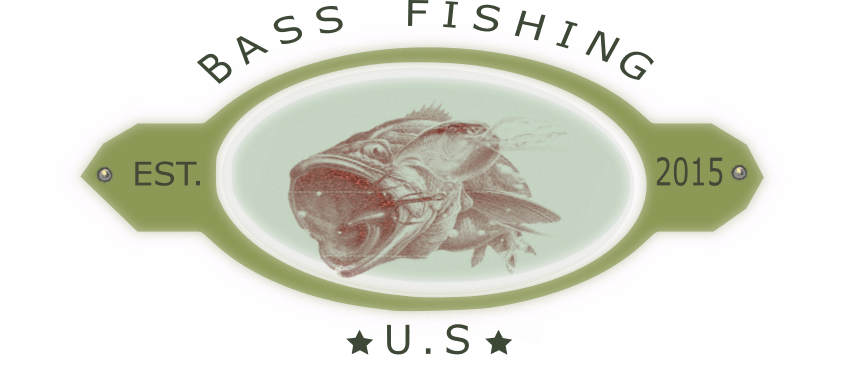
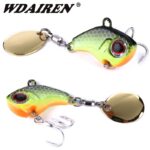

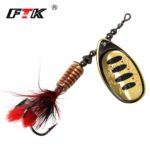
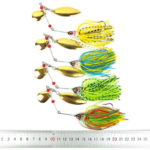
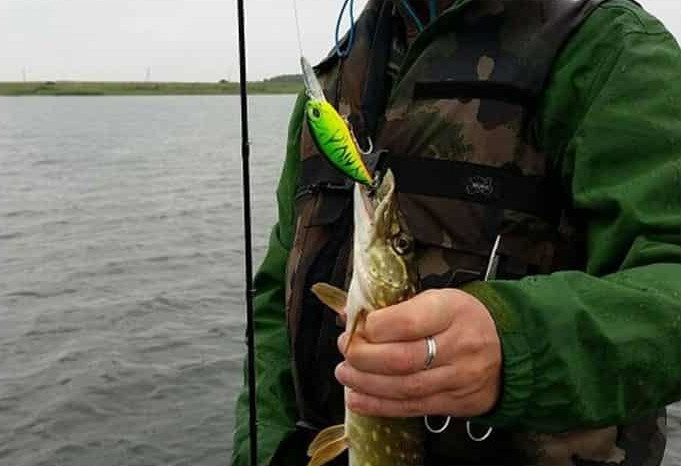
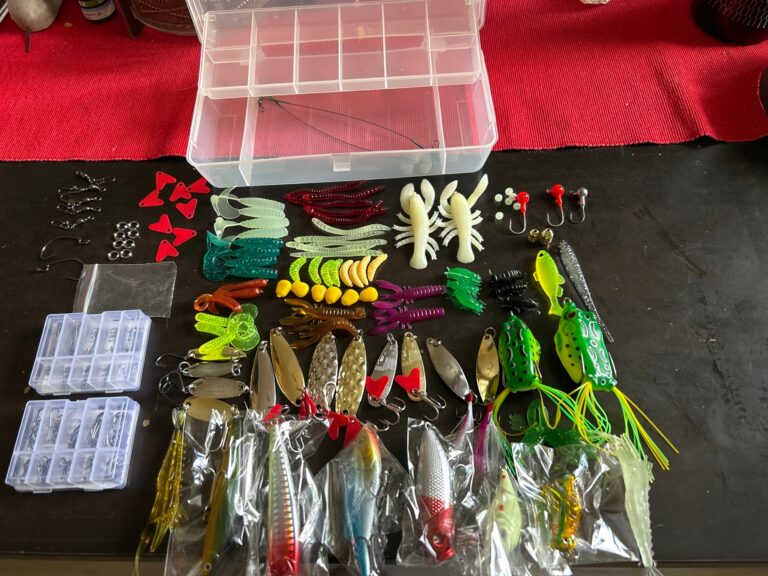

Leave a comment